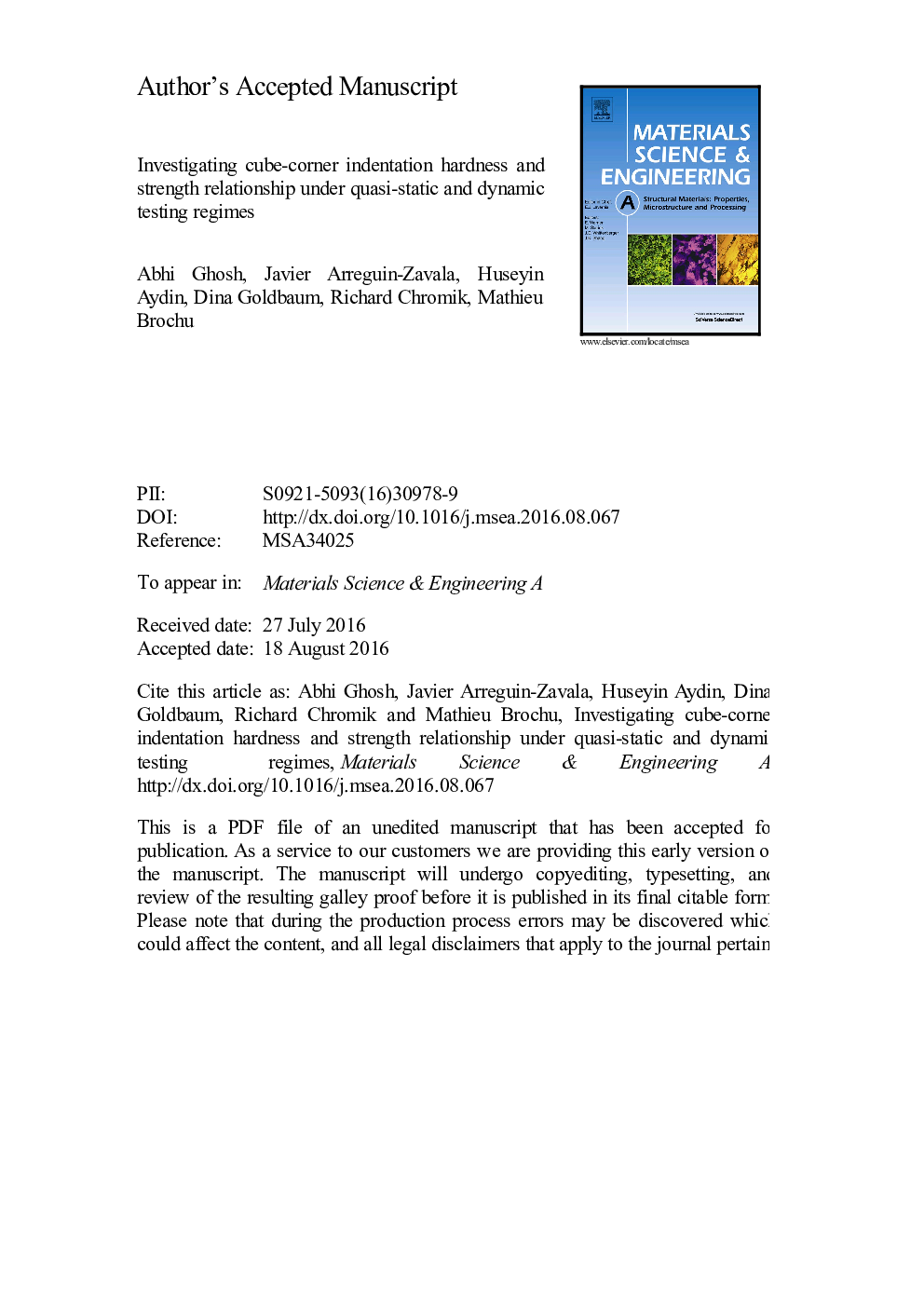| Article ID | Journal | Published Year | Pages | File Type |
|---|---|---|---|---|
| 5456703 | Materials Science and Engineering: A | 2016 | 16 Pages |
Abstract
Several works in the past have attempted to correlate uniaxial strength and indentation hardness for a range of materials. The proportionality constant of an indenter provides the basis to the hardness-strength relation of a material. Sharp indenter tips like the cube-corner have gained popularity in high strain-rate microtesting. Owing to its low semi-angle, the proportionality constant of a cube-corner indenter tip considerably deviates from the ideal Tabor's hardness-strength relation. A two-dimensional wedge model obtained from the slip-line theory is utilized for computing the theoretical proportionality constant for the cube-corner tip (~1.81). The validity of computed theoretical proportionality factor for the cube-corner tip is assessed under a range of strain hardening conditions by the inclusion of representative strain under the indenter tip. Proportionality constant and representative strain relationship for a cube-corner indenter tip are assessed for both quasi-static and dynamic strain rate regimes using quasi-static and dynamic indentation hardness, along with quasi-static and dynamic stress-strain (Ïâε) curves.
Related Topics
Physical Sciences and Engineering
Materials Science
Materials Science (General)
Authors
Abhi Ghosh, Javier Arreguin-Zavala, Huseyin Aydin, Dina Goldbaum, Richard Chromik, Mathieu Brochu,
